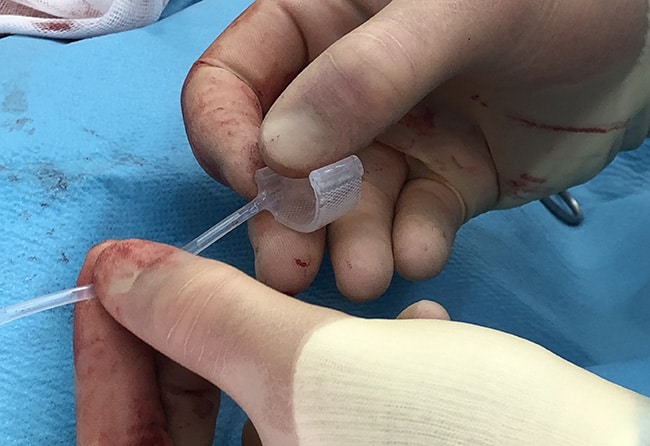Categories
Artificial Urethral Sphincter (AUS) for treating Urethral Sphincter Mechanism Incompetence
Urinary Incontinence continues to be one of the most common long-term medical conditions affecting pet dogs
Although there are multiple causes of urinary incontinence in the dog including congenital malformation, the most common acquired cause remains Urethral Sphincter Mechanism Incompetence (USMI) with approximately 20% of female dogs developing this condition following neutering and the loss of endogenous oestrogens.
Although the majority of dogs are and should be treated with medical therapy (eg phenylpropanolamine, oestrogen), this is not without the risk of possible but uncommon side effects and is successful in 60-90% cases. Surgery can be considered in any dogs who do not respond satisfactorily to medical treatment i.e. either adverse effects are encountered or whose incontinence fails to improve.
Various surgical managements have been developed over the years including attempts to reposition or lengthen the bladder neck (e.g. colposuspension, urethropexy) either alone or in combination. More recently, surgeons have looked at increasing the urethral closure pressure by either the injection of sub-mucosal bulking agents (e.g. collagen) or by placement of an external implant.
The AUS (Artifical Urethral Sphincter) is a permanent implant that surrounds the proximal urethra and is connected to an “injection port”. This port is placed under the skin and can be accessed to alter the closure pressure within the AUS system by inflating it with saline. The AUS is a static sphincter, however, in other words once urinary continence has been achieved and the dog has full urinary control, the pressure within the AUS does not normally need to be adjusted further.
Although still relatively new, the AUS has shown promising results both in the cases reported so far and in our own clinical experience with approximately 50% of cases being continent without the need for AUS inflation and another 20-40% becoming continent after incremental saline inflation. Like any surgery, postoperative complications are possible and the two most serious of which are implant infection or urethral stricture both of which would require reoperation and implant removal.
The AUS provides a good option for incontinent female dogs who cannot be controlled using medication and provides the best option for male dogs who are incontinent as phenylpropanolamine is only effective in approximately 45% of these cases.
We have had good success with AUS placement here at Eastcott Referrals and welcome referrals for investigation of urinary incontinence to our Soft Tissue Surgical Team. All cases are screened for any possible underlying anatomical cause of incontinence and all available treatment options are discussed in full with the owners before proceeding to surgery.

